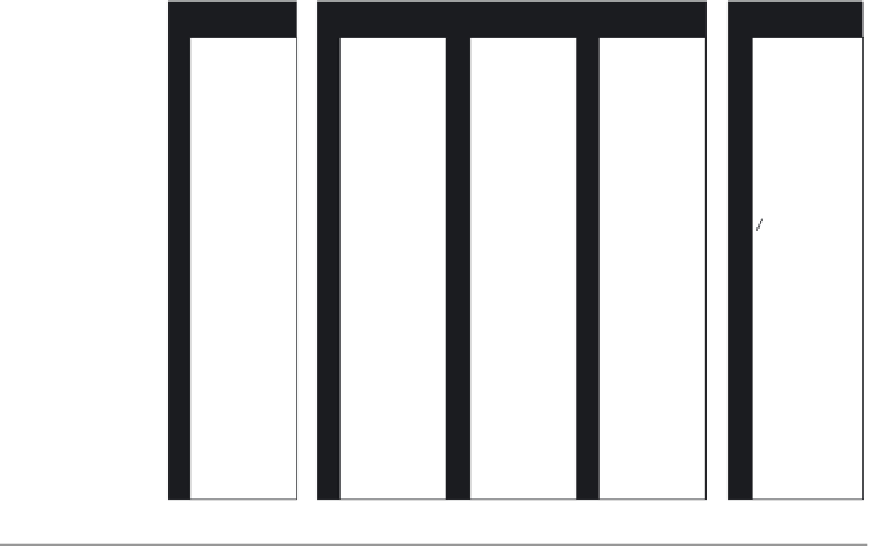Biomedical Engineering Reference
In-Depth Information
Categorization of adhesives according to their clinical application mode
One
Two
Three
Number of
application
steps
Conditioner
Self-
etching
primer
Primer
Primer
Primer
Combined
primer
adhesive
resin
Adhesive
resin
Adhesive
resin
Adhesive
resin
Adhesive
resin
Adhesive
resin
FIGURE 7.1
Schematic presentation of categorization of dental adhesives classified according to their clinical application
mode.
The one-step self-etching adhesives are available as mixed/two-bottles, or no-mix/one-bottle
adhesives, 2-hydroxyethyl methacrylate (HEMA)-free or HEMA-containing adhesives, water-free
or water-containing adhesives, and recently solvent-free or solvent-containing adhesives.
7.3
Contemporary adhesive systems
When the acid etchant is applied to enamel and dentin, superficial decalcification with the loss of
minerals occurs. Application of adhesive resin will replace the lost minerals of tooth structure and
when cured in situ becomes micromechanically retained within the porosities that are being created
during the acid-etching process
[5]
. John Gwinnett
[6]
was the first to evaluate the adhesive/enamel
interface and described an acid-resistance layer. This layer was the first true “hybrid layer” discov-
ered. Unfortunately, the term “hybrid layer” was not applied until the study by Nakabayashi et al.
in 1982
[7]
. They pointed to the existence of such intermediate layer between the adhesive layer
and dentin and gave it the name “hybrid layer” (
Figure 7.3
).





























































